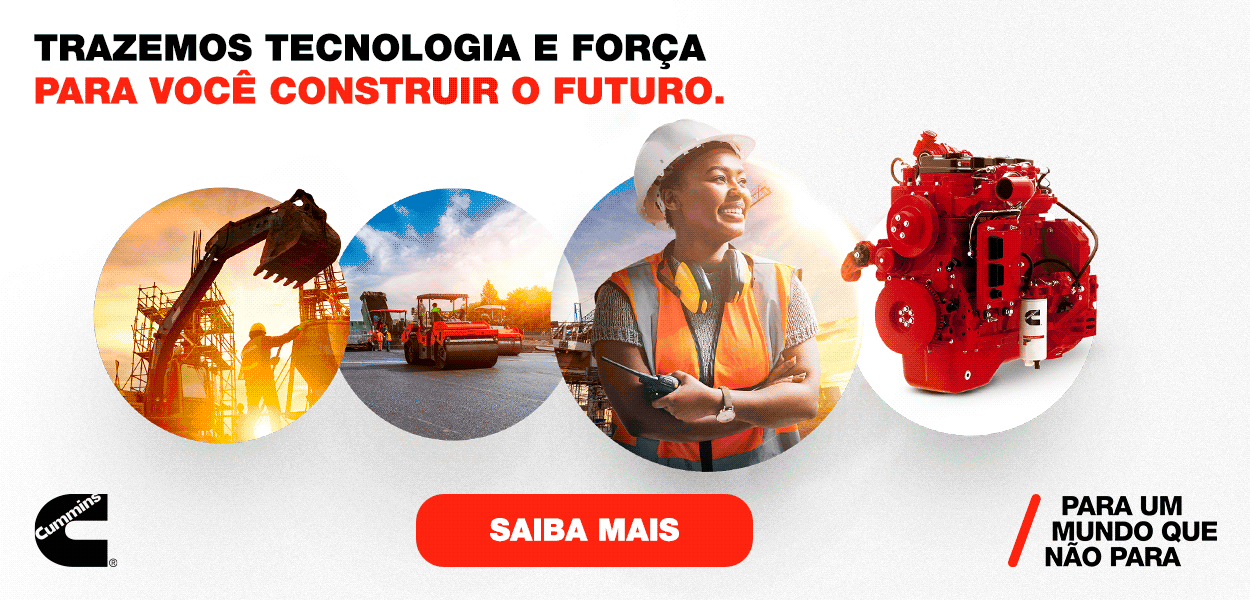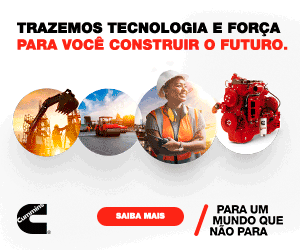The challenge of excellence
Together with technologic updating, service outsourcing comes into the agenda of most burning subjects in the area of heavy equipment management
The Act nr. 13429, the so-called Third-party Act—issued by the government in the last day of March—is arising a debate that is mobilizing fleet managers of the country for a long time, specifically about the strategies related to intermediate and final activities in the companies. After all, in a scenario of low renovation of fleets, high necessity of equipment provision, cost reduction and production maximization, how to decide what has to be outsourced, considering also the reality—in quality and price—of the services available in the country?
To know the impacts of this changing scenario, the dealer ordered a research to the Faculdade de Economia, Administração e Contabilidade da Universidade de São Paulo (FEA/USP). This research mapped the most appreciated features, the behavior of the companies and the current trends of the market. Based on the method of competitive position, the research heard 350 users of yellow-line equipment in the areas of infrastructure, agribusiness, mining and forestry, corresponding to a total of 6000 machines and trucks located in six regions of the country.
The results make clear some realities. First, there is a growing trend of machine refurbishing. These machines are being used in a second and even in a third life, mainly due to the lack of capital or credit for fleet renewal in the market. “In these cases, the first alternative is to use owner’s mechanics, since its fleet has several different brands”, explains Afonso Mamede, president of Sobratema. “The second alternative—of lower frequency, since the trend is to use the structure that is on hand—is to work with the dealer.”
As pointed out by David Rodrigues, CEO from Makro Engenharia de Movimento, in Latin countries there is also a question of mind, related to extending too much the time of using the asset. “Machines with long life have also many problems. This turns maintenance structure too heavy”, says him. “With shorter cycles, machines will have fewer failures and will demand less servicing. The dealer may then be used punctually.”
Confirming this vision, the research also showed that most interviewed companies (85 percent) carry out their refurbishments with company-hired mechanics, and a lower part of them (15 percent) selects the dealers. “For the dealers, these results show an opportunity and—at the same time—are an alert, mostly in questions related to durability and reliability of spare parts”, says Luiz Gustavo Pereira, CEO of Grupo Tracbel.
The executive is talking that companies prefer other service renders instead of the dealer when they decide to service a machine. This situation was increasing during the last two years, even because the unstable economic situation of the country.
“One of the factors that lead the client to have its own maintenance and to look for an ideal solution is the dealer’s cost of attendance logistics”, says Pereira. “Just the traveling cost already leads users to look for a cheaper option, with in-house or third-party mechanics.”
He also points that—for the dealers—the solution is to spread its technicians in a way to have them near the client’s equipment, preventing the displacement charge. “This is bad for the mechanic, for the client and for the dealer, which needs a higher quantity of professionals”.
But if this context was not so common previously, it is becoming now an unavoidable reality for the equipment industry. In the case of companies such as Tracbel, the third-party mechanic is not more seen as a competitor and passed to be considered as an ally, certified in several levels. “But the truth is that most dealers are losing money with service rendering, mainly because their idleness is high”, says Pereira, highlighting the burden of maintaining professional teams in stand-by condition.
MISMATCH
This is a crucial fact that ends to be passed on to the user. In consequence, the question is also seen through an essentially financial point of view. Mauricio Briard, director of Loctrator, comments that the current rental charge of a hydraulic excavator, for example, is of R$ 60.00 per hour. But the dealer charges R$ 210.00 per hour and R$ 4.30 per kilometer driven during its attendance. “Is this not wrong?”, asks him unwillingly.
Even considering apart the low prices carried out by the rental industry (a contingency in the scenario of crisis), the service rendered by the dealers is considered expensive. This prevents a stronger input of third-part services with the dealers. “There is a mismatch, and the dealer—as the whole industry—has homework to do, proposing, for example, some new designs of attendance, in a continuous evolution”, suggests Alisson Daniel, director from Escad Rental. “But the fault is also from the rental company, since there is a lack of conscience, union, indicators and evaluations in this market. It is necessary to show the supporting structure that exists behind, involving knowledge, guarantee and costs.”
This opinion—or critics—is shared by Rodrigues, from Makro. According to him, a distancing from the dealer in relation to the user is occurring in fact. “The word loyalty is very important to build a partnership”, says him. “Owner-installed facilities—as occurs with larger companies—do not represent 5 percent of the reality of Brazilian fleet owners. Since the market is fragmented in small companies, it is necessary to bring knowledge and come closer.”
The deduction that comes out from the analyses shows that such evolution demands a closer partnership between the parts involved, creating value for the business through machine availability. And this is real for small and large fleet owners. “The dealer has to help the clients in sharing its knowledge about asset management, in a way that they might see its value”, agrees Fernando Guimarães, executive director from Viação Cometa, owner of a fleet of more than 2500 vehicles.
To define if the service is expensive or not is just a question of negotiating appropriate cost conditions. “Labor cost has to be established in accordance with the corresponding level of specialization”, points Ivan Montenegro, Implantation and Operation Director from New Steel. “In other words, we have to understand the client’s needs and adjust our proposal.”

Av. Francisco Matarazzo, 404 Cj. 701/703 Água Branca - CEP 05001-000 São Paulo/SP
Telefone (11) 3662-4159
© Sobratema. A reprodução do conteúdo total ou parcial é autorizada, desde que citada a fonte. Política de privacidade














